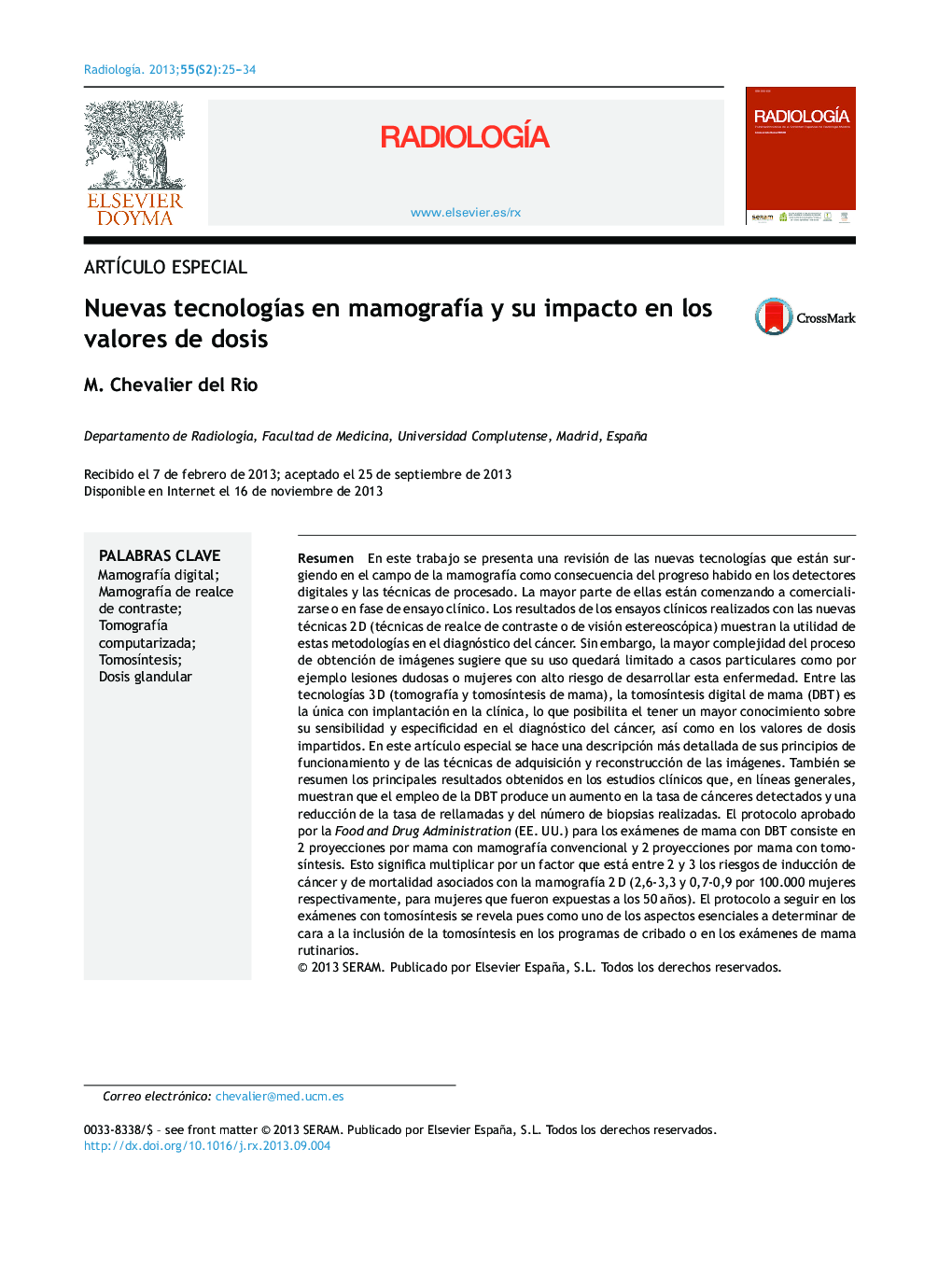| Article ID | Journal | Published Year | Pages | File Type |
|---|---|---|---|---|
| 4245556 | Radiología | 2013 | 10 Pages |
Abstract
This article reviews new mammography technologies resulting from advances in digital detectors and processing techniques. Most are just starting to be commercialized or are in the clinical trial phase. The results of clinical trials with the new 2Â D techniques (contrast-enhanced techniques or stereotactic techniques) show they are useful for diagnosing cancer. However, the greater complexity of the image acquisition process suggests that their use will be limited to particular cases such as inconclusive lesions or women with high risk for developing breast cancer. Among the 3Â D technologies (breast tomography and breast tomosynthesis), only breast tomosynthesis has been implemented in clinical practice, so it is the only technique for which it is possible to know the sensitivity, specificity, and radiation dose delivered. This article describes the principles underlying the way breast tomosynthesis works and the techniques used for image acquisition and reconstruction. It also summarizes the main results obtained in clinical studies, which generally show that breast tomosynthesis increases the breast cancer detection rate while decreasing the recall rate and number of biopsies taken. The protocol for breast tomosynthesis approved by the Food and Drug Administration (USA) consists of two conventional mammography projections for each breast and two tomosynthesis projections for each breast. This means multiplying the risks of inducing cancer and death associated with 2Â D mammography by a factor between 2 and 3 (2.6-3.3 and 0.7-0.9 per 100,000 women exposed when 50 years old, respectively). The protocol for breast tomosynthesis examinations is one of the aspects that is essential to determine when including tomosynthesis in screening programs and routine breast imaging.
Keywords
Related Topics
Health Sciences
Medicine and Dentistry
Radiology and Imaging
Authors
M. Chevalier del Rio,
